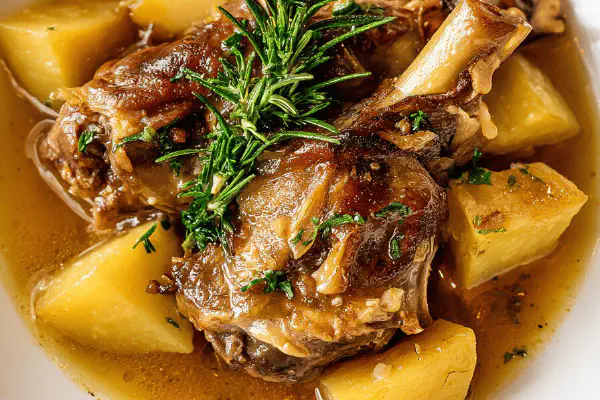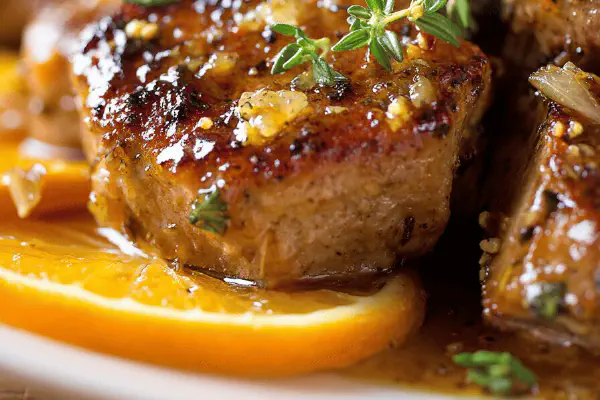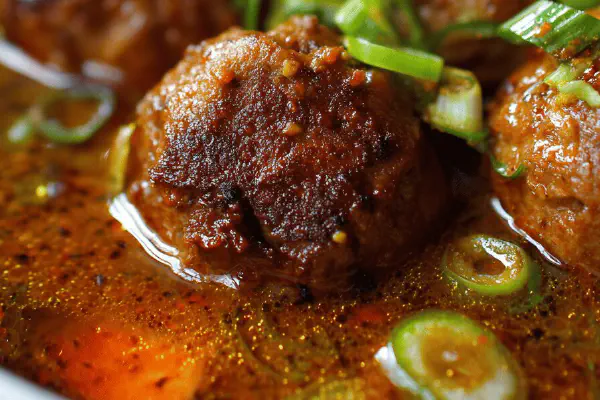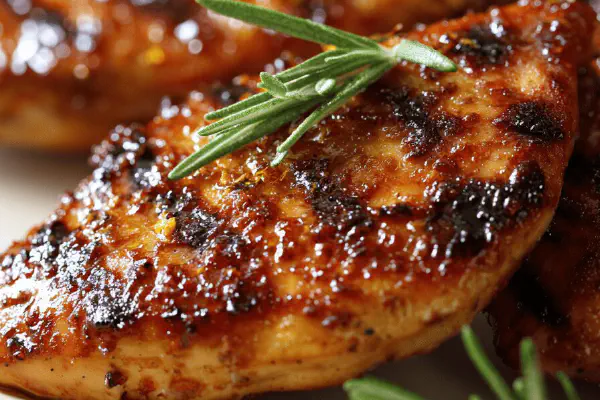Featured Recipe
Twisted Griot du Agrikol
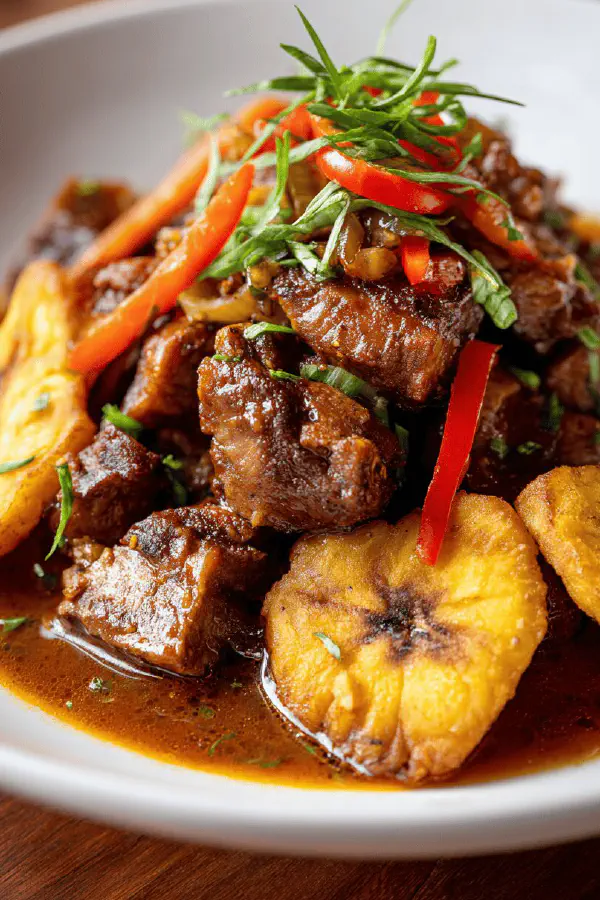
By Kate
"
A deep-flavored Haitian pork stew where shoulder meat simmers slow in citrus and bold heat, then crisps up fried. Uses chicken broth and tamarind juice instead of beef and orange. Aromatics bouquet changes to chives and cilantro. Scotch bonnet stays, replaced one herb. A layered, tactile method teaching temperature and texture cues over strict clocks. Ideal for those who know pork needs patience. Crunch from frying seals all those stewed notes. Garnish options expand traditional sides with fried plantain chips.
"
Prep:
25 min
Cook:
Total:
Serves:
4 servings
pork
Haitian
stew
citrus
spicy
Introduction
Fatty pork shoulder chunks bathing in a tart, smoky tamarind broth with the wake-up punch of scotch bonnet. Slow simmers that soften meat but keep edges intact. Then the big finish—sizzling fry for that crunch contrast, sealing those deep citrus-spiced juices inside. Not a quick fry and toss stew. Watch the pot, smell the garlic when it hits the broth, and watch the velvet bubbles form—the kind of slow cooking that rewards your attention to texture and timing. Substitutions keep it flexible in your pantry. Avoid the common mistake—overcooked meat that falls apart by patience but not too much heat.
Ingredients
About the ingredients
Swapping chicken broth for beef lightens the color but retains umami backbone. Tamarind juice cuts orange sweetness, adds tart complexity. If you can’t find scotch bonnet, pick habanero but adjust quantity—too much heat can scorch flavor. Chives replace poireau and parsley for a fresh herbal brightness, with cilantro adding citrusy lift. Less oil in marinade blends better for searing without burning. Fry in peanut or maize oil for higher smoke point and neutral flavor—corn oil works if peanut isn’t on hand. Salt and pepper go in late but always taste before frying. Keep herbs bundled tightly to avoid leaf bits in broth.
Method
Technique Tips
Start by hot-oiling the marinade for that blast of flavor release. Searing pork in batches avoids crowding trap—less steaming, more browning. Add liquids after browning to lift fond flavors. Slow simmer low so pork fibers relax but don’t shred; the traditional pot boil ruins texture, turning chunks to mush. Timing isn’t rigid—texture is your guide. Test by pressing pork with spoon; it should feel tender but not falling apart. Rest after draining to dry surface and cool muscle fibers for better crust. Use a thermometer or test oil temp to keep deep-fry steady; too hot burns crust before inside heats. Small batches prevent temp drop. Use paper towel layers for draining to keep crisp pockets dry. If sauce is too thin, reduce separately for a glaze instead of adding before frying.
Chef's Notes
- 💡 Start with oil. Heat it until shimmering. Add marinade. Listen for sizzle, that’s flavor. Quick stir, avoid burning bits. Add pork in batches, don’t crowd. Sear well. Keep juices locked.
- 💡 After browning, pour in tamarind juice and broth. Garlic next, then scotch bonnet whole. Don’t pierce. Bouquet garni adds aroma. Season well before simmering. Medium-low heat crucial.
- 💡 Simmer. Look for barely breaking bubbles. Cooking for 2 hours? Texture is key. Should feel tender when prodded, but not mush. Remove pepper gently, keep herbs contained.
- 💡 Drain pork on paper towels. Let it rest. This step ensures cooling, makes it firmer for frying. Oil should be hot, 175°C. Fry until golden but test temp for best results.
- 💡 Optional garnish, fried plantain chips match well. Pikliz adds tangy kick. Keep fried pork dry; moisture ruins crispy texture. If it’s soggy, next time adjust frying times.
Kitchen Wisdom
How do I get tender pork?
Slow simmer is key. Monitor heat. Low means juicy results. High might turn it mush. Don't rush. Patience matters.
What if I can't find scotch bonnet?
Use habanero, but reduce—less heat if needed. Too much can cover flavors; adjust sensibly. Balance spiciness.
Problem… broth reducing quickly?
Add small water splashes. Keep texture consistent. If evaporates too soon; adjust heat next time for better control.
Best storage for leftovers?
Refrigerate in airtight container, up to 3 days. For longer, freeze portions. Crisp again in oven when reheating. Avoid microwaving.
